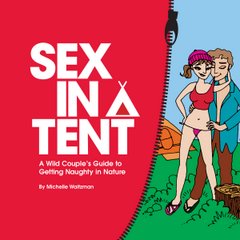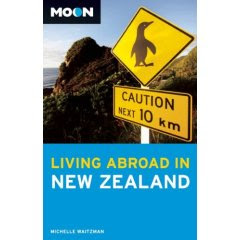 Queen Charlotte Sound - a popular "glamping" location in NZ
Queen Charlotte Sound - a popular "glamping" location in NZSo I was on the internet "resarching" (that is, procrastinating) and came across this article about "Glamping" - a term I've never heard before. Apparently it's all about putting some glamour into camping - deluxe camping I suppose.
From the looks of the article, this new term is a tactic to get more women interested in camping holidays. If it sounds fabulous and decadent, supposedly women will like it more. As a non-glam camper, I actually find that a bit offensive. I'm perfectly happy to cook my own meals, carry my own gear and get to the beautiful vistas on my own power, thanks. I don't need to pay someone else hundreds of dollars per day to make it easier on me.
On the other hand, I understand that not everyone feels like I do. Luxury wilderness adventures are not new. One visit to the century-old hunting lodges in Africa will tell you that. The well-to-do have always been interested in seeing "wild" places, without having to suffer for it. Today, Africa remains a popular place to rough it in style, along with the Galapagos Islands, the Incan ruins of Chile, and increasingly Antarctica. Even here in New Zealand, luxury hunting and fishing lodges offer fly-in service, while some of the country's most popular trails can be covered with ease as your gear is transported for you from lodge to lodge by boat. It's all of the gorgeous scenery, with a fraction of the discomfort.
I have nothing against the five-star option. I think it's great that even people who are not interested in toughing it out, are interested in areas of natural beauty. After all, those people are the ones with the money and the power to help protect those areas for the rest of us!
As long as the building of luxury lodges doesn't ruin unspoiled areas, I'm willing to live in harmony with the glampers. But one of the dangers is that people assume that because they've paid a lot of money to do something, it is safe. Anyone, regardless of expenditure, can get seriously injured or killed doing wilderness activities they aren't prepared for.
You can pay tens of thousands of dollars to be guided up Mt. Everest, but that doesn't mean you won't get a cerebral or pulmonary edema and die - or get severe frostbite and lose a limb. It happens every year. Or doing a multi-day hike with your pack being transported for you - you could easily get lost (particularly if you know nothing about navigation) and find yourself stuck in the woods overnight with no gear at all. The wilderness is a risky place, and spending money won't change that.
So is glamping the next big thing in travel? Certainly adventure vacations have been gaining in popularity over the past decade or so. And now it's oh-so-chic to be concerned about the planet. So perhaps glamping is an idea whose time has come. Or maybe it's just a desperate attempt to convince the ladies that a camping vacation is worth the same price as a beach resort!




 Every time a long weekend comes along, G suggests we do a tramp in the Ruahines, a mountain range about half way up the North Island. But every time, we end up making other plans or going somewhere closer to home. Last weekend was the last long weekend we'll see until October, so we decided to bite the bullet and hit the Ruahines.
Every time a long weekend comes along, G suggests we do a tramp in the Ruahines, a mountain range about half way up the North Island. But every time, we end up making other plans or going somewhere closer to home. Last weekend was the last long weekend we'll see until October, so we decided to bite the bullet and hit the Ruahines. Luckily, the popular hut is something of a 5-star lodge compared to other huts. It has a gas heater inside, plus gas cookers. So once we changed into dry clothing, our moods were greatly improved. The hut filled up to its 20-person capacity, including 5 kids who were trying to play hide and seek but weren't very good at it. The only reason the game worked at all was that it got dark by 5:30, so it was hard to see anything to begin with!
Luckily, the popular hut is something of a 5-star lodge compared to other huts. It has a gas heater inside, plus gas cookers. So once we changed into dry clothing, our moods were greatly improved. The hut filled up to its 20-person capacity, including 5 kids who were trying to play hide and seek but weren't very good at it. The only reason the game worked at all was that it got dark by 5:30, so it was hard to see anything to begin with!  The gas heater had completely dried out all of our wet tramping clothes, so we were happy to put them back on for day two. But the weather was not on our side. More drizzle followed us away from the deluxe accommodations, over the saddle, and on towards our next destination.
The gas heater had completely dried out all of our wet tramping clothes, so we were happy to put them back on for day two. But the weather was not on our side. More drizzle followed us away from the deluxe accommodations, over the saddle, and on towards our next destination. The Ruahines are taller than the Tararuas, where we do most of our trips, and more rugged and steep. The track between Sunrise Hut and Top Maropea Hut (our next stop) couldn't have been more different than the previous day's. Exposed, covered with alpine scrub, steep and eventually muddy and slippery, this was not the beginner's route. One tramper had already sprained his ankle going for a day walk along this track, and was slowly limping his way back to Sunrise Hut. The rain returned along with - yes, a bit of wet snow. It was the first weekend of winter after all! So after a short but challenging walk, we arrived at Top Maropea Hut and decided to hunker down.
The Ruahines are taller than the Tararuas, where we do most of our trips, and more rugged and steep. The track between Sunrise Hut and Top Maropea Hut (our next stop) couldn't have been more different than the previous day's. Exposed, covered with alpine scrub, steep and eventually muddy and slippery, this was not the beginner's route. One tramper had already sprained his ankle going for a day walk along this track, and was slowly limping his way back to Sunrise Hut. The rain returned along with - yes, a bit of wet snow. It was the first weekend of winter after all! So after a short but challenging walk, we arrived at Top Maropea Hut and decided to hunker down. Top Maropea Hut is not often used, probably because it's so close to the much bigger and more comfortable Sunrise Hut. It also couldn't be more different from it's neighbour. It sleeps just four, and has an open fireplace which pretty much funnels any heat you create directly up and out of the chimney, rather than warming the hut itself. There is a long-drop for your toileting pleasure, but the roof has long since disappeared, making it rather unpleasant in the rain, and rather wet too! The ground in front of it has also eroded away so that even entering the outhouse requires some gymnastic abilities.
Top Maropea Hut is not often used, probably because it's so close to the much bigger and more comfortable Sunrise Hut. It also couldn't be more different from it's neighbour. It sleeps just four, and has an open fireplace which pretty much funnels any heat you create directly up and out of the chimney, rather than warming the hut itself. There is a long-drop for your toileting pleasure, but the roof has long since disappeared, making it rather unpleasant in the rain, and rather wet too! The ground in front of it has also eroded away so that even entering the outhouse requires some gymnastic abilities. Giving my rain jacket a workout on top of the Ruahines.
Giving my rain jacket a workout on top of the Ruahines. 





